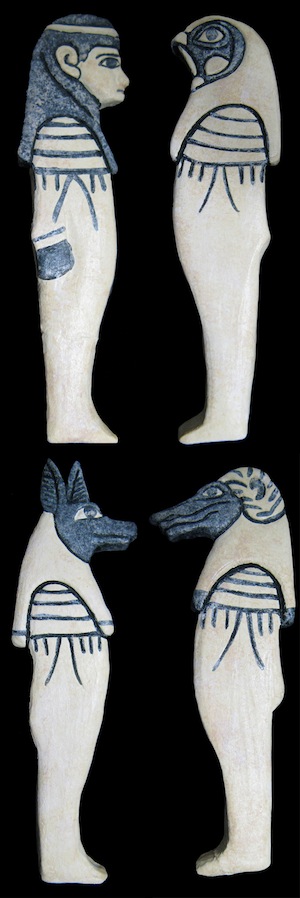Sculpture

Canopic Figures
Egyptian
replicas: by artist Carrie Allen
date of the original: c. 1069 BC
provenance of the original: Egypt
description: Canopic figures representing the four sons of Horus. Replicas; wax originals. Each: height 9 cm, width 3 cm, depth .5 cm.
The Egyptians realized that the removal of the abdominal organs, and therefore much of the moisture in the human body, was crucial to the process of mummificiation. Beginning in the eleventh dynasty (2134-1991 BC), the viscera were placed in embalming fluid and housed in four canopic jars that represented the four sons of Horus, an important Egyptian deity (see: Horus as a Falcon; Horus/Sobek.)
Each jar was also associated with a tutelary goddess: the jar containing the liver with Isis, the lungs with Nephthys, the stomach with Neith, and the intestines with Selket (see: Scorpion Amulet). The jars were then entombed with the deceased. During the twenty-first dynasty (1077-943 BC) this practice changed. The organs were embalmed, packaged separately with wax figures like these replicas, and returned to the abdominal cavity.
(See also: False Door; Ushabtis.)